Two approaches regarding the understanding of Freemasonry
There are two approaches – to call it ‘general’ – regarding the understanding and presentation of Freemasonry as a historical, economic, social, and cultural phenomenon.
The first attempts to ‘explain Freemasonry through Freemasonry’ [1] – which means that it methodologically addresses the study of the genesis and evolution of this organization through the very internal structure inherent in the Organization itself – which it considers sufficient and autarchic [2].
The main areas on which research is directed in this type of approach are: ritual, symbolism, founding myths and doctrine (the corpus of laws); and these areas are studied through disciplines such as hermeneutics, ethics and historiography.
The whole universe of the Masonic Temple is reduced in this case to the living and the interpretation of the ritual – which becomes a mnemotechnical exercise – the understanding of symbolism, the unaltered transmission of arcanas of the Archaic Grades, the founding of myths and the deepening of the doctrine.
Any analysis undertaken in such a context is self-reflexive, perpetual reporting to the same landmarks in Craft’s entire tradition.
From this perspective, no action outside the Organization is necessary because everything that can be said about its origins and history is already contained in the old manuscripts.
The interpretation of these documents – known in the literature as Old Charges – and the realization of various conjectures between the assumptions thus obtained are necessary and sufficient steps to construct some theories of justification of the historical and doctrinal continuity of Freemasonry.
This is Harry Carr‘s analytical approach, which resulted in the so-called Transition Theory, first published in 1968, in volume 81 of the Ars Quatuor Coronatorum under the title: 600 Years of Craft Ritual [3].
On the 5 November 2007 at the meeting of the Grand Masters of Europe, Lord Northampton, as Deputy Grand Master of the United Grand Lodge of England, expressed as clearly as possible this self-reflective vision, stating that:
‘Freemasonry has no role except Freemasonry, and the only influence it should seek is on itself and on its own members.’
‘In any case, commenting on this statement by Andrew Prescott in A History of British Freemasonry 1425-2000, such a perspective can indeed be valid within the ethical system of Masonry, but from the historical point of view it is not rather than an oxymoron.’ [4]
If we are thinking of ‘developing knowledge’ [5], this approach leads to a horizontal evolution of the increase in the quantity and quality of knowledge, which is, in fact, a perpetual recapitulation of the ritual and doctrine.



Therefore, we cannot speak of genuine progress, which would involve transitions from one stage to another in the process of knowledge, but only an endless centripetal movement in which the most advanced ensemble of interpretation – irrespective of the nature of knowledge – will invariably be reported to the set of axioms contained in the doctrinal body.
Such a view of the foundations of Freemasonry will be particularly useful to the members of this organization in the process of personal training, acquiring knowledge and broadening the informational horizon, but from a methodological point of view, it will be a non-criticalway of working.
For those who live in such a paradigm, Freemasonry is a perfectly calibrated mechanism that moves after immutable laws, and in which each individual has his predetermined role in this process of preservation and permanent recapitulation of the doctrinal body.
However, the representatives of the second approach consider that ‘Freemasonry cannot be explained by Freemasonry’ [6].
For this reason, Andrew Prescott says;
‘it is imperative to establish a general [interpretation] framework for [the whole] history of Freemasonry, and only then to continue researching the neglected documentary material.
A historian tries to describe the changes that societies, cultures, and institutions are going through overtime.
Freemasons are often eager to proclaim that they are the depositories of an esoteric truth: Pure and Accepted Freemasonry, which has been transmitted unaltered to them throughout the ages.
Here we are dealing with a fundamental conflict, which refers to the fact that, in a Masonic context, too often history does not find its place.’ [7]
This second approach treats Freemasonry as an open space for investigations, considering the Organization’s heritage as a common and important domain for research – multidisciplinary.
Which must be made accessible to academia and specialists in disciplines such as history, archaeology, sociology, economics, architecture, philosophy, ethics and aesthetics, art history, cultural anthropology, social psychology, hermeneutics, heraldry and others.
This approach is in fact a way of professionalizing scientific research within the profile lodges and a way of raising knowledge at the Craft level.
By comparison with the first approach presented above, the second one is characterized by a vertical development, which implies the increase of knowledge and the use of scientific research methods whose first purpose is to broaden the knowledge sphere by discovering and the presentation of new information, resulting from the application of the specific methods of each mentioned discipline.
We, therefore, have an open system of rational investigation and academic research, whose critical analysis attempts to present the realities of Freemasonry as objectively as possible in their historical and factual development.
Their approach was to integrate the Masonic phenomenology into a broader vision, encompassing the entire socio-political, historical and religious sphere of the sixteenth- nineteenth centuries in a coherent ensemble, in which historiography intertwined with the critical analysis of events, the cultural traditions and the biographical markings of the personalities who marked – for good or evil – the historical and doctrinal evolution of the Masonic Order.
This is especially the case of the Research Lodges of the Great Regular Obedience, being the only ones that can lead to a qualitative increase in knowledge and can interconnect Freemasonry with the fields of interest of the main scientific disciplines, removing it from isolation and giving it a well-deserved place alongside those organizations that have often traced the events of history.
Footnotes
Resources
[1] Andrew Prescott, A History of British Freemasonry 1425-2000, Centre for Research into Freemasonry and Fraternalism (CRFF), Sheffield University, Sheffield, 2007.
[2] In this case, the meaning is ‘autarchic organization’, that is self-governing (αυταρκεια).
[3] Harry Carr, Ars Quatuor Coronatorum, Vol. 81, 600 Years of Craft Ritual, 1968, pp.153-279.
[4] Andrew Prescott, op.cit., p.3.
[5] According to Francis Bacon, The Advancement of Learning, Oxford University Press, London, 1906.
[6] In the original text, according to Andrew Prescott, op.cit., p.3.
[7] Andrew Prescott, op.cit., pag.3,4.
Article by: Cosmin Dumitrescu, Ph.D

Bro. Cosmin Dumitrescu, Ph.D.
Professor and Scientific Secretary of the Center of Excellence in Philosophy at the Faculty of Philosophy, University of Bucharest, Romania, specializing in the History of Ancient Greek Philosophy, Hermeneutics and Ancient Greek Language.
President of the Byzantine Cultural Society, Editor-in-Chief of the biannual magazine Byzantine Studies.
Numerous scientific research articles were published in the Journal of Philosophy of the Institute of Philosophy, Romanian Academy.
Published books: The Logic of Religion (Bucharest, 2005), Sophia's Avatars (Bucharest, 2006).
Past Master in Lodge Hermes Trismegistus No.242, Bucharest, within the National Grand Lodge of Romania; Worshipful Master of Lodge of Research Gnosis C3, Sibiu.
Numerous participation in conferences and symposia as part of the annual activities of the National Grand Lodge of Romania.
Masonic books published: The Royal Art (Bucharest, 2013), Anabasis (Bucharest, 2016), Sol Invictus (Bucharest, 2018).
Numerous scientific studies were published in the Gnosis yearbook of the Gnosis Research Lodge in Sibiu, Romania.

The Advancement of Learning
By: Francis Bacon
The Advancement of Learning (full title: Of the Proficience and Advancement of Learning, Divine and Human) is a 1605 book by Francis Bacon.
It inspired the taxonomic structure of the highly influential Encyclopédie by Jean le Rond d’Alembert and Denis Diderot, and is credited by Bacon’s biographer-essayist Catherine Drinker Bowen with being a pioneering essay in support of empirical philosophy.

The Freemason at Work
By: Harry Carr
This is one of the most successful Masonic Publications in recent times due to the immense knowledge of the late Harry Carr and his entertaining writing style.
If you enjoy your masonry then this book will bring a new delight to all that you see and hear in lodge.
When Harry Carr became secretary and editor of the Quatuor Coronati Lodge of Research, the answering of lodge questions became a major part of his duties.
In a style that became a hall mark of all his masonic writing, he always answered a little more than the original question.
In response to hundreds of requests from all over the world, the answers he gave to questions during his twelve years office as editor of Quatuor Coronati Transactions have been collected together in this book.
Only the best and most interesting subjects are included and every question will be relevant to most brethren in the course of their work in the lodge ? hence the title The Freemason at Work
This book was substantially revised by Frederick Smyth, the eminent Masonic author and Past Master of Quatuor Coronati Lodge, in 1992; brining the text right up-to-date for much had change since the book was first published in 1976.
This is a book to be treasured, one that will provide a wealth of knowledge in an easy to read style.
A collection of more than 200 questions with comprehensive answers to all manner of masonic subjects. 390 pages,
Recent Articles: masonic history
 Protestantism and Masonic Influence in Brazil Discover the untold story of how Freemasons helped Southern Americans immigrate to Brazil post-Civil War, fostering economic and educational growth in Santa Bárbara d’Oeste and Americana. Learn about their pivotal role in establishing Protestant churches and ensuring the secularity of the Brazilian State amidst a Catholic-dominated society. |
 Explore the proper use of the sacred word in Brazilian Freemasonry through an analysis of Masonic literature and Bible translations. Uncover the errors in pronunciation and the need for corrections to maintain liturgical coherence in rituals. Discover insights on Masonry, rituals, and the Hebrew word Boaz. |
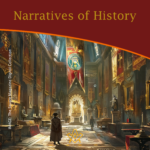 Narratives of History |
 A Very Royal Sesquicentenary |
 Unveiling the Enigma: Discover the Royal Society's Legacy and its Impact on Science. Delve into the fascinating history of the Royal Society, the prestigious UK academy shaping scientific progress since 1660. Explore its pivotal role in advancing knowledge, fostering collaboration, and unlocking the secrets of the universe. Prepare to be amazed! |
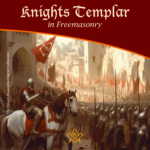 Knights Templar in Freemasonry Uncover the Mysteries of the Knights Templar in Freemasonry! Delve into the intriguing world where chivalry and symbolism intertwine. Discover the captivating rituals and ancient secrets behind the Knights Templar Masonic Orders. Explore the historical connection and delve into the enigmatic narratives that continue to fascinate enthusiasts today. Unveil the hidden truths now! |
 The Royal Arch stands as the rainbow of promise in the Ritual; it stands as the promise of the resurrection; of that which was lost and that it shall be recovered. The question arises as to whether the Master's Word was originally communicated in the Third Degree? On this point there is some diversity of opinion. Originally published in 1915, this insight into the Fourth Degree – the Holy Royal Arch – is as relevant today as it was over 100 years ago. |
 Unveiling the Mysteries of Druidism: Discover the Intriguing Connection with Freemasonry. Explore the ancient spiritual practice of Druidism and its fascinating ties to the enigmatic world of Freemasonry. Delve into the shared symbolism and rituals that have captivated minds for centuries. Unlock the secrets of these intertwined traditions today! |
 Uncover the legacy of freestone masons and their pivotal role in crafting medieval cathedrals. Discover the artistry behind their techniques, the hierarchy within their craft, and the enduring impact of their intricate carvings. A deep dive into the world of these master craftsmen awaits you! |
 Unearth the intriguing journey from Vincha Culture to Freemasonry. Discover how ancient building methods intertwine with modern Masonic philosophies. This exploration will shed light on the fascinating link between the Serbian term "shestarenye" and the symbolic significance of the compass in Freemasonry. |
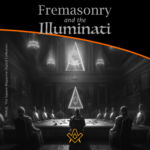 Freemasonry and the Illuminati Unravel the enigmatic world of Freemasonry and the Illuminati in our latest exposé. Dive into centuries-old mysteries, debunk conspiracy theories, and discover the truth behind these elusive societies. Are they puppet masters or mere myths? Join us as we dissect history and fact from fiction. |
 The Île des Templiers, or “Island of the Templars” lies within a leafy park in Paris. The execution site of Jacques du Molay, the last Grand Master of the Knights’ Templar bears a plaque with the epitaph ‘A cet endroit / Jacques de Molay / Dernier grand maître / de l'ordre du temple / a été brûlé le 18 Mars 1314’ (‘In this location / Jacques de Molay / Last grand master / of the order of the temple / was burned on 18 March 1314’) |
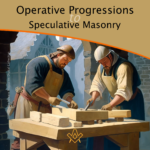 Operative Progressions to Speculative Masonry Both Operative and Speculative Masonry are an important part of the modern fraternity of Freemasonry, which combines elements of both traditions. Today, Freemasonry is a fraternity that is open to men of good character, who are interested in personal development and in making a positive contribution to their communities. |
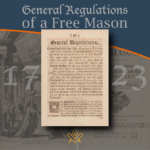 General Regulations of a Free Mason, 1723 General Regulations of a Free Mason as contained in Anderson's Constitutions of the Freemasons, published 1723. the Regulations are of great historical interest. Compiled by George Payne, the second Grand Master of the Premier Grand Lodge of England, they were printed in 1722/3, thus published just over five years after the formation of the Grand Lodge 1717. |
 The Genesis of the 1723 Book of Constitutions 2023, marks the three hundredth anniversary of the publication of the first printed Book of Constitutions of the Grand Lodge formally established in London two years previously. This is an anniversary whose significance extends beyond freemasonry. A paper by Andrew Prescott |
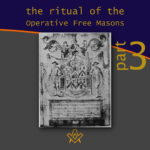 The Ritual of the Operative Free Masons - P3 Existing Operative Free Masons. The ritual I am about to refer, is that of "The Worshipful Society of Free Masons, Rough Masons, Wallers, Slaters, Paviors, Plaisterers, and Bricklayers." By Thomas Carr, M.D., P. M. Honorary Member of the Guild of Operative Free Masons |
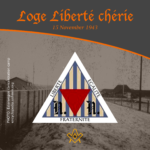 Liberté chérie was a Masonic Lodge founded in 1943 by Belgian Resistance fighters and other political prisoners at Esterwegen concentration camp. It was one of the few lodges of Freemasons founded within a Nazi concentration camp during the Second World War. |
 The Ritual of the Operative Free Masons - P2 If anyone doubts the fact that the formation of Speculative Free Masonry was due to and based upon Operative Free Masonry, it is quite easy to convince him of his error if he will only study the first Book of Constitutions. By Thomas Carr, M.D., P. M. Honorary Member of the Guild of Operative Free Masons |
 In 1881, Freemasonry rose from the ashes of a fire in the mining town of Kokomo, Summit County, Colorado. Corinthian Lodge No. 42, along with Kokomo, no longer exists but it holds the record of having been – at an elevation of 10,618 feet – the highest Masonic Lodge in the USA. |
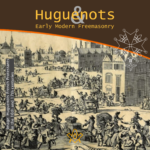 The Huguenots and Early Modern Freemasonry The Huguenots influence in the development of early modern Freemasonry at the time of the formation of the Grand Lodge in London around 1717 / 1723. |
 November is a month of reflection – perhaps due to the fact that we are getting close to the years' end – but also because Remembrance / Armistice Day (11 November) is a significant date in most countries' diaries. |
 Speculative Freemasonry, as practise by Grand Lodge of England, was officially born just over three hundred years ago, is today an international organisation, counting over six million members. It has been subjected to persecution, suppression, and abolition throughout its history. In its infancy, only a couple of decades after its official birth, it had already become a target. |
 The Ritual of the Operative Free Masons - P1 The original paper was written, first, to prove that Speculative Free Masonry was derived from Operative Free Masonry; second, to give some account of the Operative Free Masons, of their Ritual, and of their customs. By Thomas Carr, M.D., P. M. Honorary Member of the Guild of Operative Free Masons |
 American Fraternalism in the 19th and Early 20th Centuries The late 19th and early 20th centuries in the United States has been called the "Golden Age of Fraternalism." How did this come about and why was the idea of joining a fraternal organization so popular? We will explore this question and examine the regalia used by many fraternal organizations in this period. |
 Societas Draconistarum, meaning "Society of the Dragonists"– was a chivalric Order for selected nobility, founded in 1408 by Sigismund von Luxembourg, who through marriage became the King of Hungary (1387–1437) and later Holy Roman Emperor. The Order was fashioned after the military orders of the Crusades, requiring its initiates to defend the cross and fight the enemies of Christianity, in particular the Ottoman Empire. |
 The Perjured Free Mason Detected Was Samuel Prichard a perjured individual, or simply a misguided Freemason? Prichard's book "Free Masonry Dissected" published in 1730, is now used by many Masonic historians as a source of reference with regards to the introduction of the third degree into the Craft. But at the time it was published in 1730, it was not so well received by members of the Grand Lodge of England. |
 17th century and the Holy Royal Arch This article focuses on a period of transition between a point in time when we can safely and historically identify the first formation of what could be called as the ‘Royal Arch’ and the historical events that have preceded it. |
 Most Freemasons have heard the terms 'Operative' and 'Speculative' Masons, and this article helps to understand the difference: |
 Roberts' Constitutions of Freemasonry 1722 Published a year before Anderson's Constitutions, The Old Constitutions Belonging to the Ancient and Honourable SOCIETY OF Free and Accepted MASONS. Originally printed in London England; Sold by J. Roberts, in Warwick-Lane, MDCCXXII.(1722) |
 From 'Songs of religion and life', 1876 by John Stuart Blackie (1809-1895) |
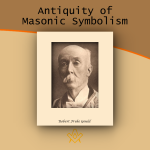 On the Antiquity of Masonic Symbolism Is the Symbolism of Masonry an inheritance derived from the old Masons who flourished before the era of the Grand Lodges (1717); or has it been borrowed from the Rosicrucians or others, after 1717? |
 Mason's Marks – from Egypt to Europe? Mason's marks have been a source of intrigue, not only to Freemasons but to historians and archaeologists. The use of simple pictograms have been employed for millennia by artisans to identify their work. But where did they originate and why? |
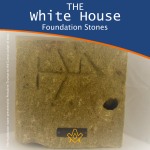 The White House Foundation Stones Further to the articles in our series on the history of the stone masons, we have a rather intriguing addition. During the 1950's renovation of the White House, President Truman retrieved more than 100 stone blocks with stonemasons marks. |
 What the Goose and Gridiron Tavern is in the ancient annals of London Freemasonry, The Green Dragon Tavern is to the memories of the Free-mason, of Boston and New England. |
 Auschwitz concentration camp: video photo article taken in 2013 |
 There are two things of importance happening this day - 27 January |
 Two approaches regarding the understanding of Freemasonry |
 Masonic Research in England c1930 An article which appeared in an American Masonic magazine, c1930 and which was reproduced in England, provoking a little controversy. |
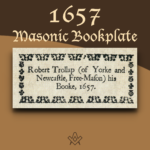 Masonic bookplates the ‘Brethren’s spiritual coats of arms and marks’ |
 The Unlawful Societies Act of 1799 Rebellious Freemasons and the 21st century |
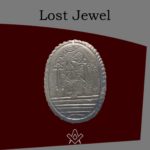 In 1912, Sarah Dowd of Dromore, Ireland, found a Masonic jewel dated 1517 - a date two hundred years before the establishment of Grand Lodge... |
 Freemasonry and Fascist Regime Interesting speech by the famous historian Prof. Aldo A. Mola, who links the fascist regime with the Masonic Associations. |
 Was famous Russian poet Alexander Pushkin a Freemason? And if so, was he a member of the lodge ‘for which all the lodges in Russia were destroyed’? |
 The Importance of Masonic Research Why is accurate - or authentic - Masonic research so important? The importance of making a daily advancement in Masonic knowledge is something that The Square is passionate about promoting. |
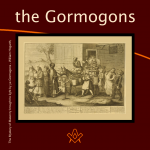 The Antient Noble Order of the Gormogons had a brief existence in the eighteenth century; they left few records or accomplishments, |
masonic knowledge
to be a better citizen of the world
share the square with two brothers

click image to open email app on mobile device








